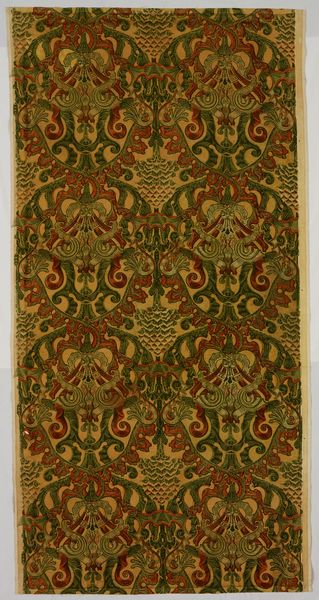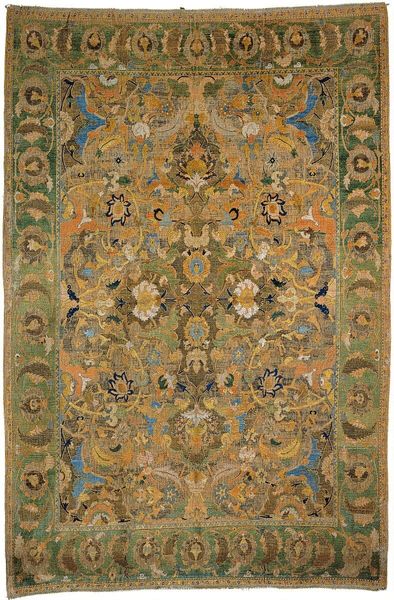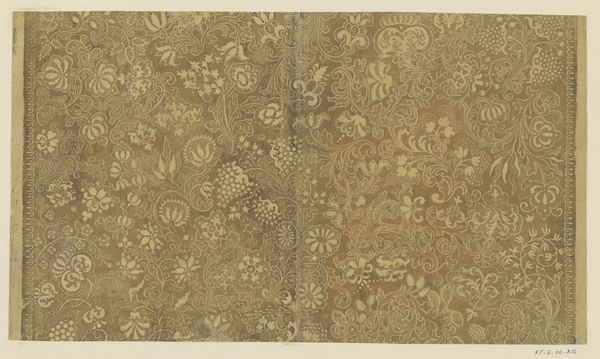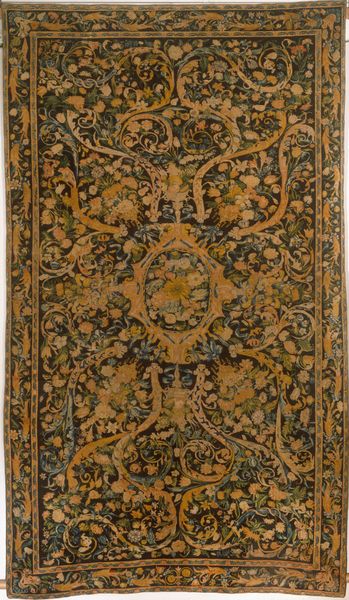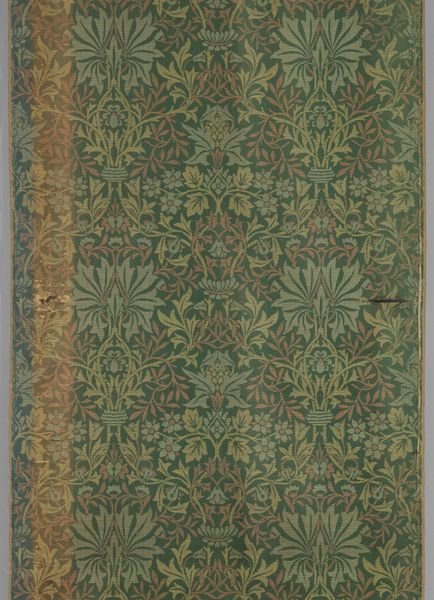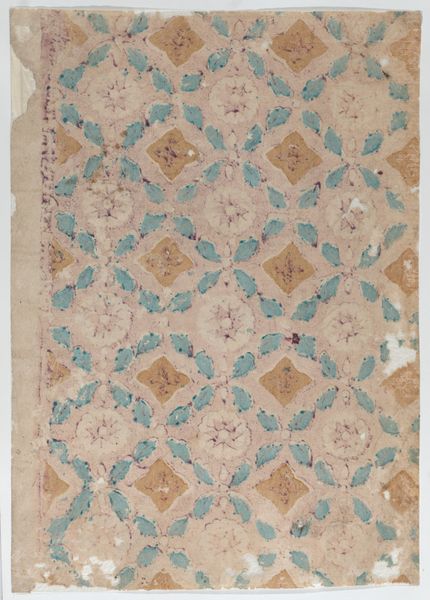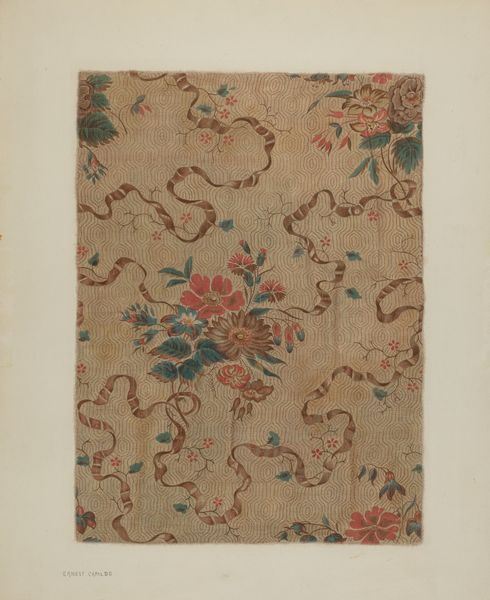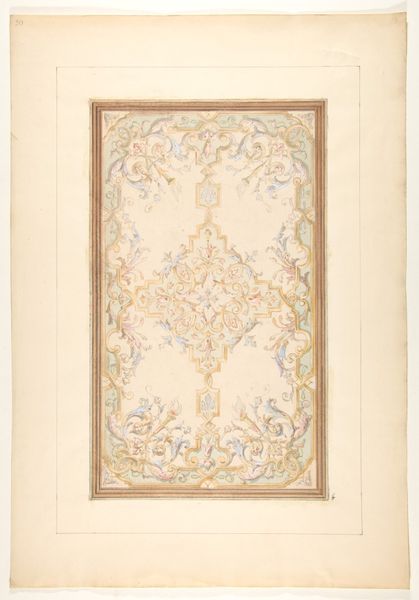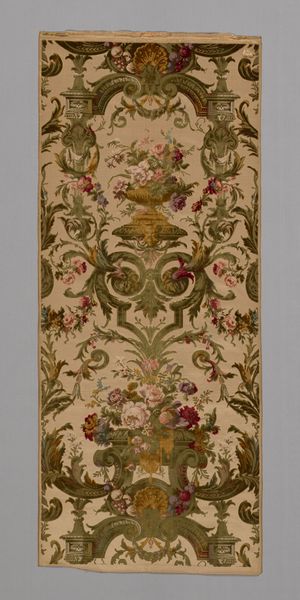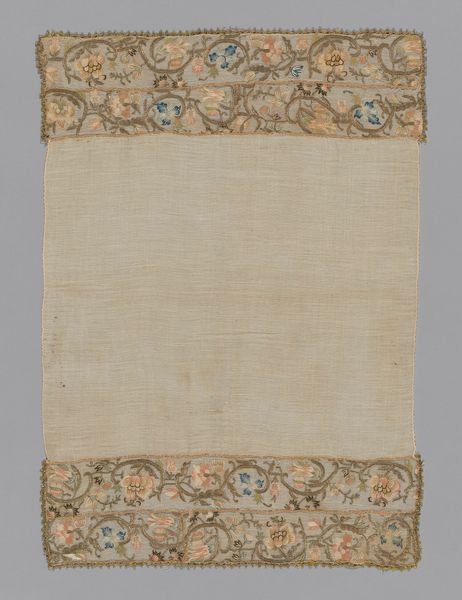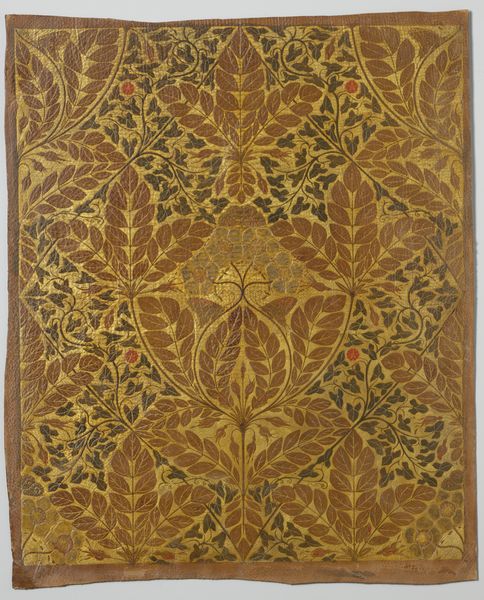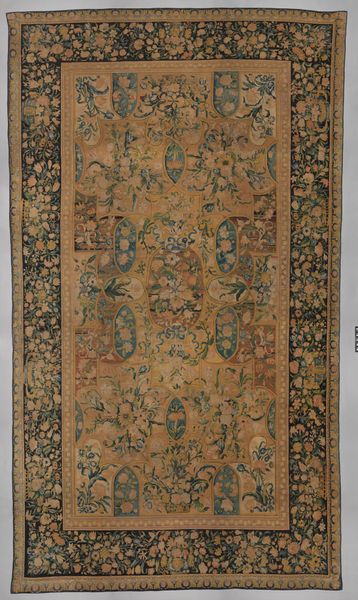
textile
#
wood texture
#
pattern
#
asian-art
#
textile
#
ukiyo-e
#
organic pattern
#
watercolor
Dimensions: height 178 mm, width 138 mm
Copyright: Rijks Museum: Open Domain
Curator: We're looking at "Tezuma ushiro," a woodblock print created by Utagawa Kunisada, dating back to around 1825-1830. It’s currently housed at the Rijksmuseum. Editor: My first thought is just... fabric. Like, gorgeous, aged textile. The muted golds and greens give it such a tactile feel. It looks like something you'd find in a forgotten treasure chest. Curator: Precisely. What we see depicted is likely a theatrical costume. Kunisada was fascinated by Kabuki theatre and often represented popular actors. It is probable, looking at this piece, that its creation was commissioned by textile industry workers or the theater itself, to highlight costumes' richness, luxury and elaborate beauty. Editor: The symmetry of the design is really captivating, and that golden patina gives it all a sense of history, doesn’t it? What about that central medallion... It is almost like the all-seeing eye staring back. Curator: The patterning, with these creatures and geometric arrangements, speaks to a broader artistic lineage of Ukiyo-e, which, beyond the pleasure districts, found patronage in rising merchant classes wanting images of prosperity and theatrical glamour. This pattern's usage on a stage, within a theater full of eager fans, creates a sense of power, fame and high culture. Editor: Makes you wonder about the play in question, and who wore it... And is it just me, or is there a hint of something slightly unsettling in those vaguely reptilian figures embedded in the design? Gives a tiny dark touch, somehow, I think. Curator: Yes, the darker color choices and their subtle weaving into otherwise very pleasant design definitely hints on other sides to the otherwise enjoyable theatrical events... They definitely can be interpreted as commentary of an artist about theatrical and social power structures... or it can be simply his signature artistic addition, making the art stand out. It would require a broader art history overview and biographical examination of Utagawa himself. Editor: Well, I find myself staring more intensely at textiles from now on, noticing narratives embedded in the weave and the patterns. The ghost of Kabuki, if you like! Curator: And for me, it underscores art's role not just as documentation but as an active element in creating cultural aspiration and social identities. This woodblock encapsulates layers of society.
Comments
No comments
Be the first to comment and join the conversation on the ultimate creative platform.

